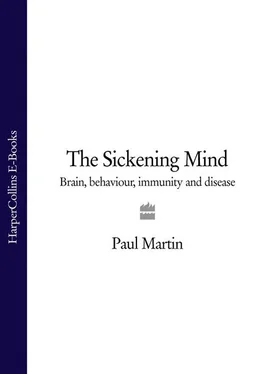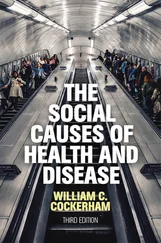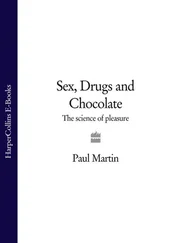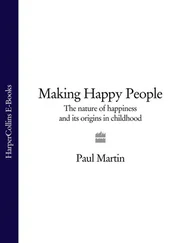1 ...7 8 9 11 12 13 ...25 Similarly, when Australian scientists investigated the aftermath of an earthquake which struck New South Wales in 1989 they found that the incidence of fatal heart attacks in the locality went up by 70 per cent. In these and other cases it was clear that psychological stress had brought about the premature deaths of vulnerable individuals.
Then we have those strange tales of voodoo, or ‘hex’, death. The unfortunate victim is ritually cursed by a witch doctor, voodoo priest, bokor or other symbolic authority figure. Once the death sentence has been pronounced the victim duly obliges by giving up the ghost and dying, usually within a few days. Competent and trustworthy authorities have been documenting instances of voodoo death since at least the sixteenth century, in places as far apart as Africa, South America, the Caribbean and Australia. It cannot be dismissed as the product of lurid fantasies.
The religious and cultural details vary, but reliable reports of voodoo death share certain basic features. First and foremost, the victim must be highly suggestible, with an unquestioning belief in the power of the sorcerer or witch doctor who curses him. He must also be totally convinced that he is powerless to do anything to save himself. An attitude of helplessness is essential: once the bone has been pointed or the curse uttered, the victim loses any will to live. Sceptics, scientists and tourists do not die from voodoo curses. A third important ingredient is social pressure. It speeds things along no end if everyone else in the victim’s social world shares the same beliefs. Family and friends reinforce the victim’s belief in the inevitability of death, abandoning the unfortunate individual to die in complete isolation. 1 The enormous importance of social relationships for mental and physical health is a theme we shall return to later.
Literature is replete with characters who drop dead from the effects of overpowering emotion. Shakespeare’s King Lear, for example, dies of a broken heart when his favourite daughter Cordelia is cruelly murdered shortly after Lear is reconciled with her. On discovering Cordelia’s body, Lear gives vent to his crushing grief:
Howl, howl, howl, howl! O, you are men of stones!
Had I your tongues and eyes, I’d use them so
That heaven’s vault should crack. She’s gone for ever.
Then Lear drops down dead.
Trouble, strife and sickness
Intense emotion usually falls short of causing people to drop down dead; it may simply make them more vulnerable to illness. And here again, at least some of the folklore has withstood scientific scrutiny. Research has confirmed the existence of systematic links between psychological factors such as anxiety, stress, depression and hostility, and a wide range of physical disorders including minor infections, gut disorders, herpes, allergies, asthma, arthritis, coronary heart disease and cancer. Indeed, according to some characteristically controversial research by the London University psychologist Hans Eysenck, certain psychological measures of personality and behavioural style have a greater bearing on which individuals will die from cancer or heart disease over the following ten to fifteen years than whether or not they are smokers.
Anxiety and stress have frequently been linked with vulnerability to illness. Numerous long-term studies have found that people who experience pronounced feelings of tension or anxiety are substantially more likely to develop coronary artery disease, or die from it, over the following years. For example, an American study which tracked several hundred people over a twelve-year period found that individuals who exhibited high levels of psychological distress were roughly twice as likely to die as those with only average levels of distress. This connection between distress and death held up even when other medical risk factors such as old age, obesity, smoking, high blood cholesterol and high blood pressure were taken into account, so it was not merely a question of distressed subjects also being old, fat or smokers. Psychological distress was related to subsequent mortality in its own right.
Similar conclusions emerged from a Harvard University project. This investigated the health of former Harvard students whose psychological and biological profiles had been assessed thirty-five years earlier, as part of a series of laboratory experiments on stress. The way subjects reacted during the laboratory tests predicted their physical health years later. Individuals who displayed signs of severe anxiety during the original stress tests subsequently suffered from significantly more physical illnesses, including coronary heart disease, over the following decades. Responding anxiously to a stressful situation when a young adult proved to be a reliable marker for ill-health of all types in middle age. Another investigation by scientists at Harvard Medical School found that very shy children, who suffered from severe anxiety when in social situations, were more prone to allergic disorders such as hay fever.
It may help to look in greater detail at one specific example of a fairly subtle connection between psychological factors and subsequent disease. An American research project conducted in the 1970s investigated the psychological characteristics associated with infectious mononucleosis, otherwise known as glandular fever. This unpleasant and debilitating disease is prevalent among teenagers and young adults. The symptoms include a general malaise, fever, sore throat, loss of appetite, headaches, together with swelling of the lymph nodes or ‘glands’ in the neck, groin and armpits. Recovery can take many weeks. Occasionally, serious complications arise, such as damage to the liver or spleen.
The disease is caused by a type of herpes virus known as the Epstein-Barr virus (EBV), which we encountered in chapter 1 as a once-favoured cause for chronic fatigue syndrome. In common with other herpes viruses like herpes simplex (which causes cold sores and genital herpes), EBV can remain dormant in the body for years without causing any symptoms. Dormant viruses are normally held in check by the individual’s immune system, but anything that weakens immunological control over the latent viruses can trigger the emergence of disease symptoms.
The subjects of this investigation comprised over 1300 young men entering the West Point military academy. On arrival at West Point each student was screened to see whether he was already infected with EBV. About two-thirds of the students carried the virus, which is typical for a normal population. The remaining third had not yet been infected. These potentially susceptible students were then tracked to see who would become infected with EBV. And here lies an important general point: not everyone who is exposed to disease-causing bacteria or viruses becomes infected. In fact, only about one in five of the originally virus-free students went on to be infected with EBV during their four years at West Point. Of those who did become infected, a quarter developed obvious clinical symptoms of disease. And here lies a second general point: not everyone who gets infected with disease-causing viruses or bacteria develops a clinical disease.
Psychological assessments revealed that those men who went on to be afflicted with infectious mononucleosis shared certain distinctive psychological characteristics. In particular, they tended to be the ones who had suffered most from academic pressure. Students who had the dispiriting combination of a strong motivation to do well, but a poor actual performance, had a greater likelihood of contracting infectious mononucleosis. And once they became ill these highly motivated but poorly performing students spent longer on average in hospital. They were more susceptible to the disease and when they got it, they got it worse.
Читать дальше












